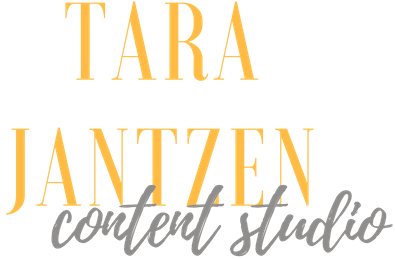Last week I wrote about those things to consider before accepting a media opportunity. In this two-part series, I’d like to finish with what should happen after you agree to a media interview—preparing your spokesperson.
It is the responsibility of the spokesperson or subject matter expert to clearly, honestly, and succinctly articulate information bringing insight and clarity to an issue or topic. It is also their responsibility to do this in a way that positively supports the organization and brand represented.
If you have the ability to conduct formal media training with your experts, I strongly recommend this. While it can be costly depending on the sources you leverage and the time away from the normal business, it’s worth the investment. The experience of spending a focused day or more conducting deeper dives and interview simulations can make an enormous difference on the final outcome, the confidence of your spokespeople, as well as the long-term impact of your overall PR program.
If you don’t have the luxury of conducting media training, it’s important your expert is fully prepared to field an array of questions while remaining poised and confident. They should be ready to provide the most valuable messaging with relevant and unique points of view.
If the expert is unprepared, unfocused, or all over the place with their responses, the reporter may decide to go elsewhere, and even worse, not return with future opportunities. Take the time to ready your spokesperson so a long-term relationship can be built with the journalist and the news outlet.
Extract the Messaging
After you’ve confirmed with the publication what it is they’re looking for from this interview, connect with your expert to understand what sort of messaging they have prepared and how they plan to share it. The journalist has an objective with this interview and so should your expert. What do they hope to convey or accomplish through this conversation? Does that align to what your business wants to accomplish?
“Take advantage of every opportunity to practice your communication skills so that when important occasions arise, you will have the gift, the style, the sharpness, the clarity, and the emotions to affect other people.” — Jim Rohn
Work with the expert to prepare 3-5 points they’ll want to make and connect those points with company or client tie-ins. Tighten the points up understanding they will have a very short window to get their message across, and also so they can be used as easy quotes in the story. Affirm that the views of your expert are in fact the same approved views of your organization. Don’t assume they are—this can be problematic if not confirmed.
Be certain the expert has solid examples they can reference in the form of approved case studies, client references, and supporting metrics. These will strengthen and validate your story and expertise.
Prepare a Briefing Sheet
Once you have a solid understanding of what the journalist needs and the general responses of your expert, piece together a briefing sheet that can tie it all together for the spokesperson. Provide the brief to them well in advance so they have time to prepare, practice, and ask additional questions.
A briefing sheet should include things like publication name, journalist, interview logistics such as call-in number or location, date and time of the interview, and who is expected to be on the call or in person. If there will be any supporting demo or video conferencing, test the connection in advance and provide the URL on the briefing sheet.
Provide a quick summary of the opportunity and any relevant context it may align to, such as a press release announcement, an external market issue, or even a crisis in the industry. It should all help bring focus as to why this interview is taking place.
“Storytelling reveals meaning without committing the error of defining it.” — Hannah Arendt
Insert the key messages and supporting points you’ve already discussed with your expert to ensure everyone’s on the same page. Include potential questions the journalist may pose during the conversation, both positive and negative, so the expert is prepared for anything.
If your company is relatively new or unknown to this outlet, it’s always good to provide quick bullets on who you are, what you do, and why you are different so the spokesperson can consistently share your story. Even the most seasoned can explain your business in a way that might not be the most effective. Providing pre-approved descriptors is always best for brand consistency.
The rest of the briefing sheet should include things like the background of the outlet and the journalist, as well as examples of the recent stories they have written and published, preferably in line with the current topic.
In some instances, you may also want to consider including any online comments or feedback from a story. This may shed light on a controversy or can highlight areas where past audiences have been confused or thought more insight was required. It can also clarify the depth of knowledge of the audience or experience level they currently have on the topic.
Schedule a Practice Run
After the expert has had a few days to absorb all the information, schedule a practice run, especially if this is their first interview or the first time they are speaking on a specific topic or testing new messaging. If you work with a PR agency, have them participate or drive the practice run. Record it so there is a greater chance of learning from any mistakes afterward.
You want to assess how well the expert responds to questions and how easily they convey the message or get to a point. Test them on teeing up the company information as well as leveraging the supportive client stories and case studies.
“Success depends upon previous preparation, and without such preparation, there is sure to be failure.” — Confucius
If there is potential for controversy, practice hitting them with the hard questions to see how they respond, whether they keep their cool, and if they can remain positive and thoughtful in their response. Coach them on being respectful to the journalist at all times.
If they believe it’s the wrong question or are unclear of what exactly is being asked, educate them on how to tactfully bridge it by putting in into another context or rephrasing it so it’s positive or more pertinent to your objectives. Work with them to ask for clarification on a question when necessary, in using silence to gather their thoughts and distill the message, or to simply respond that they don’t have an answer for the question and could get back to them.
It goes without saying, but reinforce the point that there is really no such thing as “off the record.” They should understand that anything they say should be something they are okay with showing up in print at any time. Even the more seasoned executives can forget this point, so it bears repeating.
The bottom line is that they should be helpful, positive, and provide useful information that is unique or has a different perspective than others. It should be delivered in a clear, direct, and crisp style. Coach them on any areas where they need to pay closer attention or amend in any way.
Gather Pertinent Documentation
The reporter may require additional documentation or images to support their story. This could include the expert’s bio and headshot, screenshots of a system or demo discussed, a list of metrics or facts, or even case study details so they are able to provide accurate information in the final article.
Whatever it is they require, provide it as quickly as possible so they can easily meet their deadlines. Again, be respectful of their time, just as you would hope they would do for you.
Conduct a Debrief
After the interview is complete, I strongly suggest holding a quick debrief with your expert. Not only do you want to provide them with immediate feedback while it’s still fresh, but you want to understand any issues or questions they may have.
It can be difficult to give honest feedback to a more senior executive, but you only do yourself and your business a disservice if you don’t take this seriously.
“Tell me and I forget. Teach me and I remember. Involve me and I learn.” — Benjamin Franklin
Show them what they did right, what points you thought were strong, but also show them where they can improve, where they may need to tighten a message, provide more clarity, or give more examples.
If you felt they needed to expand their knowledge on the topic, suggest they conduct further research or speak to their peers on the subject and its trends. It’s their responsibility to stay on top of their field and to strive to know more than their competitors. Remind them that it’s not only good for the company, but it’s also important for their own personal brand. This provides them an incentive and answers the question of what’s in it for them.
Ideally, you want them to continue participating in interviews and to be available when necessary. The more comfortable they become with the process as well as their performance, the more willing they will be to accept.
Read Part 1 | The Media Interview: Smart Questions Before Accepting
Image Credit: ©iStock.com/DragonImages

